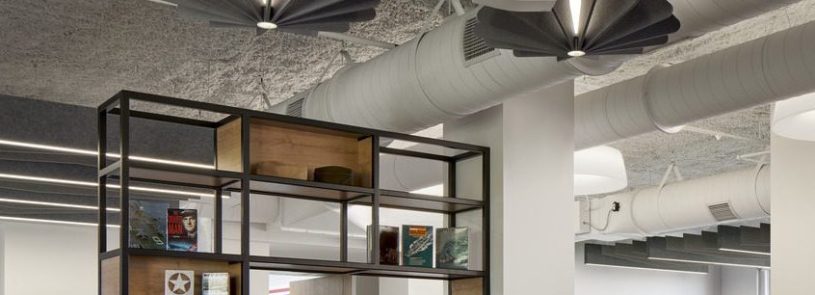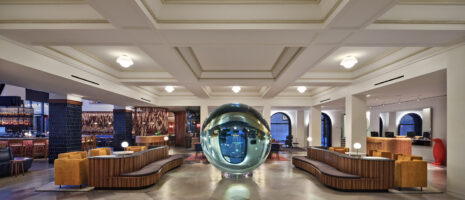Enhance indoor spaces through integrated lighting and acoustics

By David Wright
Lighting and acoustics each impact the experience of a space—the comfort of occupants, their ability to perform tasks, and how they engage the space or connect with others within it. Optimizing these impacts by merging lighting and acoustic design is becoming more refined as the approach matures in the built environment.
Incorporating acoustic ceiling elements with lighting as well as an increasing number of integrated acoustic luminaire styles provides a dynamic range of design concepts not seen in the past.
As expected with any innovative trend, however, there are challenges to understanding and then balancing the strengths and drawbacks among the options. To address these key considerations, we recently posted a whitepaper.
The paper provides benchmarks and definitions for acoustics as well as design considerations for integrated acoustic luminaires. A case study with four different lighting and acoustic design concepts is also included to illustrate the impacts of different approaches. The options showcase where each approach provides biophilic enhancement, aesthetic augmentation, lighting improvement, acoustic improvement, and cost consideration.
The concepts provide a few variations of the numerous design possibilities and solutions available when seeking to integrate lighting and acoustics design; each new or renovated space has its own characteristics, needs, goals, and budget. Regardless of the criteria of an individual project, however, integrating lighting with acoustics can universally help optimize the experience of a space for those within it.
Keep in mind, too, that a successful lighting and acoustics integration is about the design, not the products.











